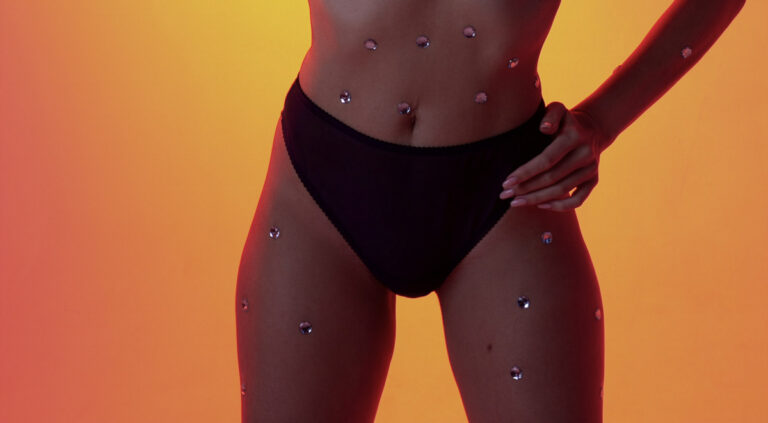Trying to find a way to get rid of your hip dips? First step, stop trying

Hip dips—a naturally occurring part of the female form that has been peddled as yet another thing to be insecure about. At this rate, I genuinely can’t keep up. It seems that my days of covering toxic beauty trends are far from over. As someone with hip dips—and who recently went through a classic Christmas season filled with diet talk in my household—I now find myself self-loathing-ly adding another ‘flaw’ to my list. The dreaded low rise jeans comeback, hourglass syndrome and the thigh gap had been living on it a while. My relationship with my body is improving, perhaps not rapidly, but it is improving. I worry, however, for those like me who may be terribly affected by the onslaught of all this hip dip talk.
In fact, you will find ‘how to get rid of your hip dips’ content scattered throughout the internet—most notably the intense workout videos that saturate YouTube’s search for the term—and much like the ab crack trend, you guessed it, it’s all rubbish. Once again, an insecurity that you can actually do very little about. According to Ahrefs’ data, the demand surrounding ‘hip dips’ spiked in April 2020 (primetime lockdown) at a volume trend—the “estimation of the average monthly number of searches for a keyword”—of 393,440 in the US, with a current global volume of 785,000 as of 29 January 2022.
What are hip dips and how do they occur?
So, what actually are they? Well, the term hip dips is used to refer to the indentations located on the upper, outer thigh just underneath the hip bone—they develop completely naturally and are often a result of genetics. It’s just one of those things where some people have them and some people don’t. If you do have them, you should know that they are a fixed part of skeletal anatomy, and while some exercises may reduce the pronounced appearance of them, you simply cannot get rid of them.
In fact, “hip dips are completely normal and nothing to be concerned about,” Healthline wrote, “They’re a result of your body’s unique structure and not an indication of your health status. Likewise, their presence doesn’t necessarily reflect your body fat percentage.” Such facts unfortunately don’t appear to stop the internet, and clickbait-y exercise influencers at that, from creating, exacerbating and cashing in on the insecurity.
The question with the obvious answer: Can you get rid of hip dips?
No. Not really. “Hip dips are not a sign of being healthy, unhealthy, overweight or underweight,” David Wiener, a training specialist for the Freeletics fitness app, told Women’sHealth. “Although the amount of body fat you have can make hip dips more noticeable and can be the result of having a higher level of muscle mass, it’s important to remember that hip dips are a part of your bone structure and, while you can enhance your body shape through exercise and diet, you cannot change your bone structure,” he continued.
When working out, it is important to prioritise the actual health of your hips as opposed to the aesthetic. As with all body parts, they are an incredibly vital part of your physique and proper care should be taken for their use. That is the way in which exercise should be promoted, not as a means to change something physically impossible to. This is what makes this trend particularly damning, in that you actually cannot achieve its removal. Obsessing over such could therefore make it especially dangerous to the mental health of those insecure of it.
However, there is hope on the horizon, with internet-labelled hip dips champion Bella Hadid—wearing whatever she wants, never disguising hers—becoming the poster child for people embracing their own, the trend to get rid of them may have begun its slow death (hopefully). This seems to be the case as Today, citing many examples, reported the pushback against the trend and showed evidence for the large acceptance and appreciation for these beautiful little dips.




